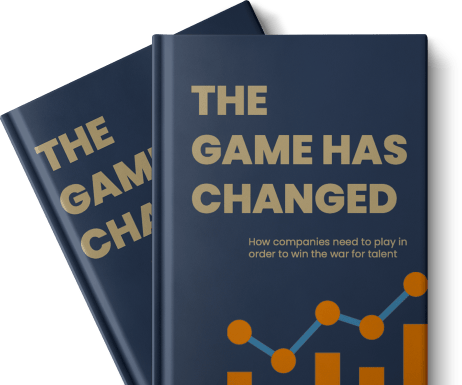Application Modernization to Achieve More with Current Systems
- Cloud, Software Development

In today’s competitive technological landscape, the concept of application modernization has emerged as a proven strategy for organizations looking to gain and sustain a critical advantage.
Whether referred to as innovation, transformation, or modernization, the goal remains the same – to leverage new capabilities without replacing entire systems, enabling companies to achieve more with their current infrastructure.
In this blog post, we will explore the topic of application modernization, its benefits, and the proven approaches that organizations can take to get more out of current systems.
Prefer to listen to the content?
Hear ELASTECH’s CEO, Armen Tatevosian, and EVP of Global Operations, Jim Zordani, in a conversation about Application Modernization.
The Benefits of Application Modernization
Political and macroeconomic unrest, coupled with budget constraints, have significantly impacted IT projects across organizations. As a result, many companies have shifted their focus towards modernizing legacy applications instead of undertaking expensive new system implementations and/or acquiring commercial off-the-shelf software (COTS). This shift has successfully provided organizations across verticals with a number of benefits:
Cost Optimization
Legacy systems often require expensive maintenance and upkeep, including specialized hardware, licenses, and service agreements. By modernizing these applications, organizations can reduce operational costs, streamline processes, and optimize resource utilization.
Enhanced Efficiency and Productivity
Application modernization enables businesses to increase both efficiency and productivity. Oftentimes, Employee performance is hampered by outdated interfaces, workflows, and systems, slowing down business operations. Further, outmoded systems negatively impact customer experiences. By modernizing these legacy applications, organizations take advantage of more intuitive and user-friendly experiences, enabling employees to work more efficiently and/or enhancing customer engagement.
Scalability and Flexibility
Legacy applications may struggle to handle increased workloads or adapt to changing market demands. Modernized systems, especially those migrated to the cloud, provide scalability and flexibility, enabling organizations to continuously meet evolving business needs, such as increased user traffic and the adoption of new functionalities. This scalability ensures that applications grow and adapt alongside the organization.
Competitive Advantage
Outdated systems are one of the main reasons that prevent companies from driving innovation, and limit their ability to respond quickly to market changes and/or increased expectations from both users and customers. Following an application modernization strategy, organizations can leverage new technologies, and integrate with emerging platforms, while rapidly delivering new features and functionalities. This agility and responsiveness enable organizations to gain and sustain a competitive edge in their market.
Application Modernization: Do's and Don'ts
Application modernization projects must be thoroughly planned and carried out. The following are crucial factors that companies need to consider in order to ensure successful project outcomes:
Evaluate Current Processes
Assess your current processes and identify systems that can be improved through modernization. Gain a clear overview of your IT infrastructure and application, along with their daily operational use and the potential return on investment (ROI) of modernizing those applications.
Ensure Stakeholder Involvement
Engage key stakeholders from operational executives to end-users and maybe even vendors. Perspectives and insights outside of IT are vital to aligning the objectives and outcomes of the modernization project with the organization’s overall goals.
Consider a ‘Soft Launch’ Approach
Instead of rolling out all modernized functionalities and new features at once, introduce them step-by-step. This iterative approach allows for employee adaptation to minimize potential disruption and a feeling of overwhelm.
4 Proven Ways to Modernize Applications
Here are four proven approaches to getting more out of current systems:

Cloud Migration
Migrating legacy applications to the cloud offers scalability, flexibility, and cost-effectiveness. It allows organizations to leverage cloud resources while optimizing their infrastructure. However, it is important to note that cloud migration does not mean just changing the host. It usually involves re-writing the source code of the application to suit the chosen cloud environment.

Refactoring Legacy Code
Refactoring involves re-writing or re-structuring existing code to improve modularity, maintainability, and extensibility. This approach enhances application performance and reduces technical debt, while facilitating the addition of new features.

Architectural Redesign
Redesigning application architecture enables scalability, maintainability, and adaptability to evolving and changing business needs. The adoption of microservices, containerization, or serverless computing makes the system more resilient and responsive.

Custom Software Extensions
Custom software extensions are an efficient path for businesses that are unwilling to change their current architecture or source code. By building new functionalities on top of the existing system, businesses can extend their software’s capabilities and add features tailored to specific needs.
When considering application modernization, it is critical to evaluate all available options and make an informed decision. Assess the complexity of your applications, available resources, and your business goals before choosing an approach or combination of approaches. For many organizations, this is an opportunity to take advantage of external expertise and guidance provided by custom software development companies like ELASTECH.
Conclusion
Application modernization is a proven approach for organizations across verticals to reduce costs, increase efficiency, and gain a competitive advantage.
Our software development teams continue to help companies get more out of their current systems by refactoring legacy systems, tools, and workflows for modern functionality.
ELASTECH offers free consultations to assess your current tech stack, evaluate application modernization strategies, and answer any questions you might have. To reserve your 1-on-1 with one of our experts, schedule below.
Book your free appointment with an Application Development Expert
How companies need to play in order to win the war for telent
